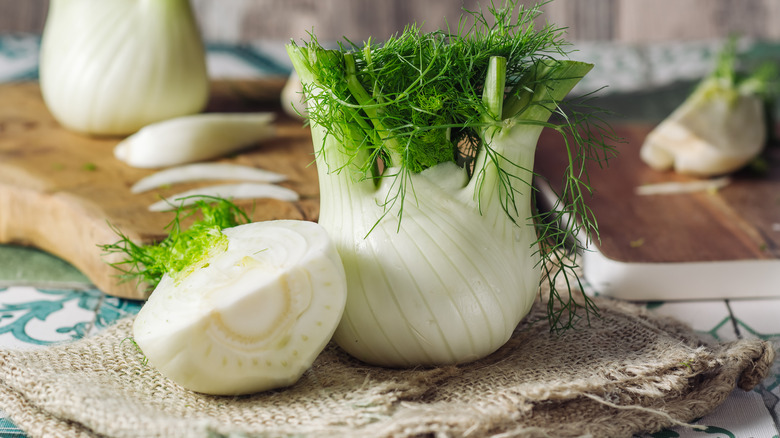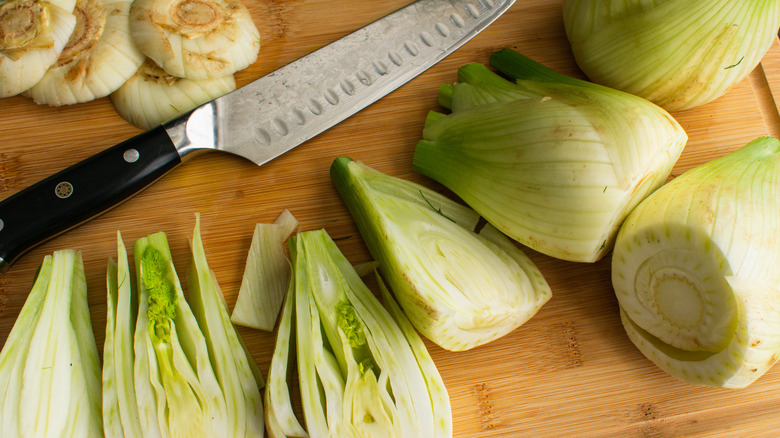How, Exactly, Do You Cut Fennel?
If you find yourself staring confusedly at a fennel plant, unsure of how to attack its mixture of bulb, leaf, and branch, you're not alone. Since pretty much every part of fennel is edible, it would be wasteful to chop the stalks off and discard the bulb just because it looks complicated. Luckily, cutting fennel isn't so bad as long as you have the technique down.
Chopping fennel is all about where you cut first. After rinsing your fennel with water and patting it dry, slice off the root at the bottom of the bulb. Because fennel is layered, much like an onion, this will make it much easier to remove wilted parts of the vegetable.
From there, cut off the stalks. If you're not using them in your current dish, you can use the leftovers to make stock or to season sauces. Otherwise, slice the stalks thinly (horizontally or vertically are both fine, depending on your preference and dish). Once this is done, next on your list is arguably the most complex part: the bulb, also known as the frond.
How to cut a fennel bulb
First of all, make sure your frond is standing upright on a smooth side instead of rolling around on your chopping board. Not only will this make the process much easier as you won't have to chase it around but it's safer for you as well. The best knife to use when cutting fennel is a sharp chef's knife, so having a stable cutting surface is vital to avoid cutting yourself. With the bulb standing on its end, cut it in half from the top down so you can remove the core from both sides of the vegetable.
How you cut the frond from here on out depends on what you're planning to do with your fennel. If you're making a cioppino soup that calls for diced fennel, for instance, slice then dice it into small pieces in the same way you would an onion. Alternatively, you could slice the frond into quarters to create wedges for an aesthetically pleasing panzanella salad topping. Another option is to shave the halves into shreds using a mandolin as part of a shaved fennel salad.
Because of its strong aniseed taste, akin to licorice in its intensity, fennel is definitely not ideal for every dish (unless you really, really like licorice). It does, however, work excellently with seafood and salads. Knowing how to prepare it properly will make it easier for you to add an intriguing, spiced taste to your next dish.

